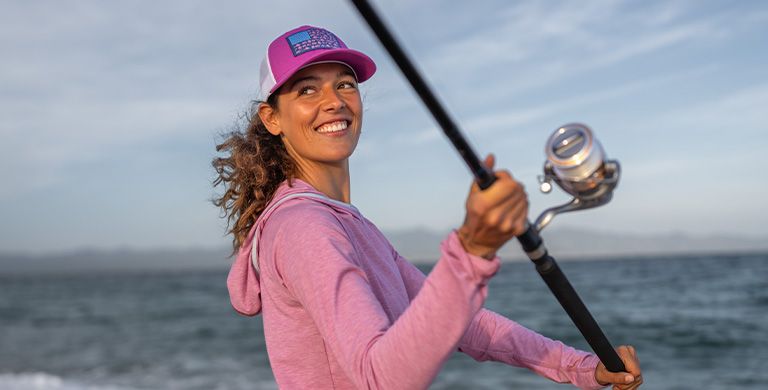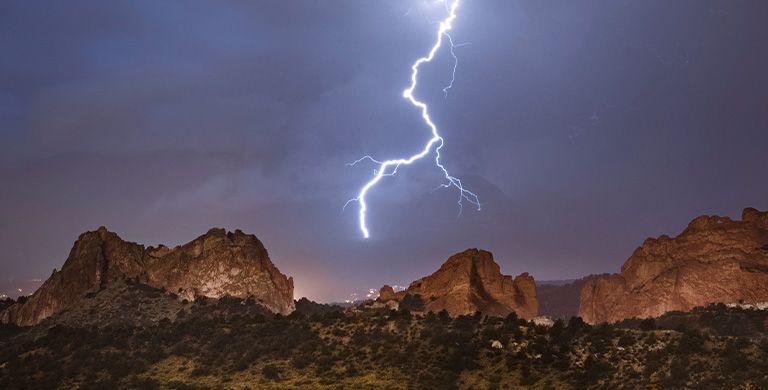OUTDOOR LIFE
Are Indoor Climbing Gyms for You?
Rock climbing is a sport for everyone, and here’s how you can learn and practice safely in a climbing gym.
BY: NANCY BOUCHARD
Once upon a time, rock climbing was considered a pursuit for the daring few who were willing to risk everything for the thrill of conquering steep mountains and sheer cliffs. Think of Alex Honnold in Free Solo, scaling Yosemite’s El Capitan without ropes—a breathtaking feat immortalized on screen. But in reality, rock climbing has become a daily passion for thousands, if not tens of thousands, of people. They flock to local climbing gyms not just for fitness, but for community. After mastering basics like harnessing up, tying a figure-eight knot, and belaying, you can take those skills anywhere. And there’s no better place to start than your neighborhood climbing gym.
Indoor climbing gyms cater to everyone from beginners to Olympic champions. These gyms are more than just workout spaces—they’re vibrant community hubs offering amenities like free Wi-Fi, coffee shops, and even food and adult refreshments for après climb relaxation. Gyms host riveting speakers, live music, and a variety of competitions from local show downs to international showcases. According to John Bergman, author of High Drama: The Rise, Fall and Rebirth of American Competition Climbing, "Climbing gyms are where friendships flourish, often becoming even more significant than those formed at school. They are a place where people of all ages and backgrounds connect for life."
There are specialized classes for women and kids, as well as a host of workshops on advanced ropework, technique and even outdoor climbing skills. Climbing teams—popular from youth to college levels—foster competitive spirits. Many gyms prioritize accessibility, with programs for climbers with disabilities, a testament to climbing’s inclusive evolution culminating in para climbing’s debut at the 2028 Olympics.
Indoor climbing gyms cater to everyone from beginners to Olympic champions. These gyms are more than just workout spaces—they’re vibrant community hubs offering amenities like free Wi-Fi, coffee shops, and even food and adult refreshments for après climb relaxation. Gyms host riveting speakers, live music, and a variety of competitions from local show downs to international showcases. According to John Bergman, author of High Drama: The Rise, Fall and Rebirth of American Competition Climbing, "Climbing gyms are where friendships flourish, often becoming even more significant than those formed at school. They are a place where people of all ages and backgrounds connect for life."
There are specialized classes for women and kids, as well as a host of workshops on advanced ropework, technique and even outdoor climbing skills. Climbing teams—popular from youth to college levels—foster competitive spirits. Many gyms prioritize accessibility, with programs for climbers with disabilities, a testament to climbing’s inclusive evolution culminating in para climbing’s debut at the 2028 Olympics.

Photo credit: Kyra Condie
James Stone, owner of Bend Rock Gym in Oregon, notes the climbing community’s diverse growth: "Our gym welcomes members aged 3 to 95, including multi-generational families." With nearly 1000 gyms across the US and Canada—and more opening regularly—these facilities are spacious, well-equipped sanctuaries where you’ll find comfortable couches, showers, yoga studios, and weight rooms. The cost of entry is low, often just the price of a day pass, with gear rental available to get newcomers started safely.
Modern climbing gyms minimize risk with advanced equipment and safety protocols. Although gravity still governs, gyms take a lot of risk out of the sport; you don’t have to worry about weather, rock fall, or any pesky things like poison ivy, bees and mosquitos. Bouldering, a rope-free form of climbing up short walls with padded floors, offers a low-barrier entry point to the sport’s thrill. Then you can step up to roped climbing.
For novices, auto-belays are a popular starting point, as explained by Stone. "Auto-belays take minutes to master. They automatically adjust rope tension as you climb and safely lower you down when you let go," he says. Auto-belays eliminate the need for a partner until climbers are ready to tackle top-rope routes, typically requiring a brief certification course.
With climbing’s rise in popular culture—boosted by films like Free Solo and its Olympic inclusion—Bergman emphasizes its appeal as a holistic, social activity perfectly suited to modern lifestyles. "Climbing fits seamlessly into daily routines, offering both solitary challenge and social camaraderie. It’s a sport steeped in tradition yet perfectly adapted to our interconnected, 21st-century lives."
To delve deeper into indoor climbing, we spoke with Jesse Grupper, a professional climber set to represent the USA at the Paris 2024 Olympics.
Modern climbing gyms minimize risk with advanced equipment and safety protocols. Although gravity still governs, gyms take a lot of risk out of the sport; you don’t have to worry about weather, rock fall, or any pesky things like poison ivy, bees and mosquitos. Bouldering, a rope-free form of climbing up short walls with padded floors, offers a low-barrier entry point to the sport’s thrill. Then you can step up to roped climbing.
For novices, auto-belays are a popular starting point, as explained by Stone. "Auto-belays take minutes to master. They automatically adjust rope tension as you climb and safely lower you down when you let go," he says. Auto-belays eliminate the need for a partner until climbers are ready to tackle top-rope routes, typically requiring a brief certification course.
With climbing’s rise in popular culture—boosted by films like Free Solo and its Olympic inclusion—Bergman emphasizes its appeal as a holistic, social activity perfectly suited to modern lifestyles. "Climbing fits seamlessly into daily routines, offering both solitary challenge and social camaraderie. It’s a sport steeped in tradition yet perfectly adapted to our interconnected, 21st-century lives."
To delve deeper into indoor climbing, we spoke with Jesse Grupper, a professional climber set to represent the USA at the Paris 2024 Olympics.

Photo credit: Trango/Hunter Smith
Who Can Benefit from Indoor Climbing?
Anyone! Climbing has so many different facets that no matter your body type, size or background there's a part of this sport that is for you. Especially just starting in climbing, leg strength, and trusting your feet is much more important than any arm strength that you might already have.
How Does a Person Get Started Climbing?
Going to a gym, taking technique classes, meeting people or going with friends is the best way to get started! A lot of climbing gyms will have introductory classes that are a great way to meet others. Just showing up at the gym usually works quite well too as you’ll meet other people who want to climb.
Should a Person Start Out With Roped Climbing or Bouldering?
Choose what excites you most. Rope climbing usually allows you to try more moves at once while bouldering allows you to figure out one move at a time. Both are super useful for the overall development of a climber!

Photo credit: Trango/Hunter Smith
What Tips Do You Have For a Beginning Climber?
Focus on footwork. The more weight you put on your foot, the more likely it will stay in place. Also, don’t over grip holds. When you people are starting out, they tend to waste energy by holding on too tightly. Try to relax and conserve energy and remember that your lower body is most likely a lot stronger than your upper body. Most importantly, enjoy the journey!
Is Fear of Heights and Falling a Concern?
I've been climbing for about 20 years and I'm still afraid of falling from heights. I think climbing teaches you to feel, realize that these feelings are there, and then try to not be overly influenced by these feelings when making a decision on the wall. Falling and failing is the best way to get better at climbing. Of course, it's nice to have successes, but oftentimes focusing on the lessons learned from a climbing project can be much more valuable than actually doing any single climb.
What Gear Do You Recommend to Get Started?
You’ll want chalk and a chalk bag to help keep your fingers tacky. For apparel, my go to kit is Mountain Hardwear Crater Lake shirts and their AP active shorts.
I’ll be wearing my Trango Horizon harness in the Olympics, and it’s a good choice for people of all abilities. The La Sportiva Solutions are a great shoe that can let you progress in climbing fast.
The beauty of rock climbing is that it can be an occasional social activity or a lifelong sport. When you travel, it gives you another activity that integrates you into the local community. It is easy to get started indoors—some people prefer climbing gyms to the outdoor form of the sport. Regardless of where you climb, the sport helps you maintain a honed body, strengthens your confidence, and is your entry into an inclusive, fun community.
The beauty of rock climbing is that it can be an occasional social activity or a lifelong sport. When you travel, it gives you another activity that integrates you into the local community. It is easy to get started indoors—some people prefer climbing gyms to the outdoor form of the sport. Regardless of where you climb, the sport helps you maintain a honed body, strengthens your confidence, and is your entry into an inclusive, fun community.



